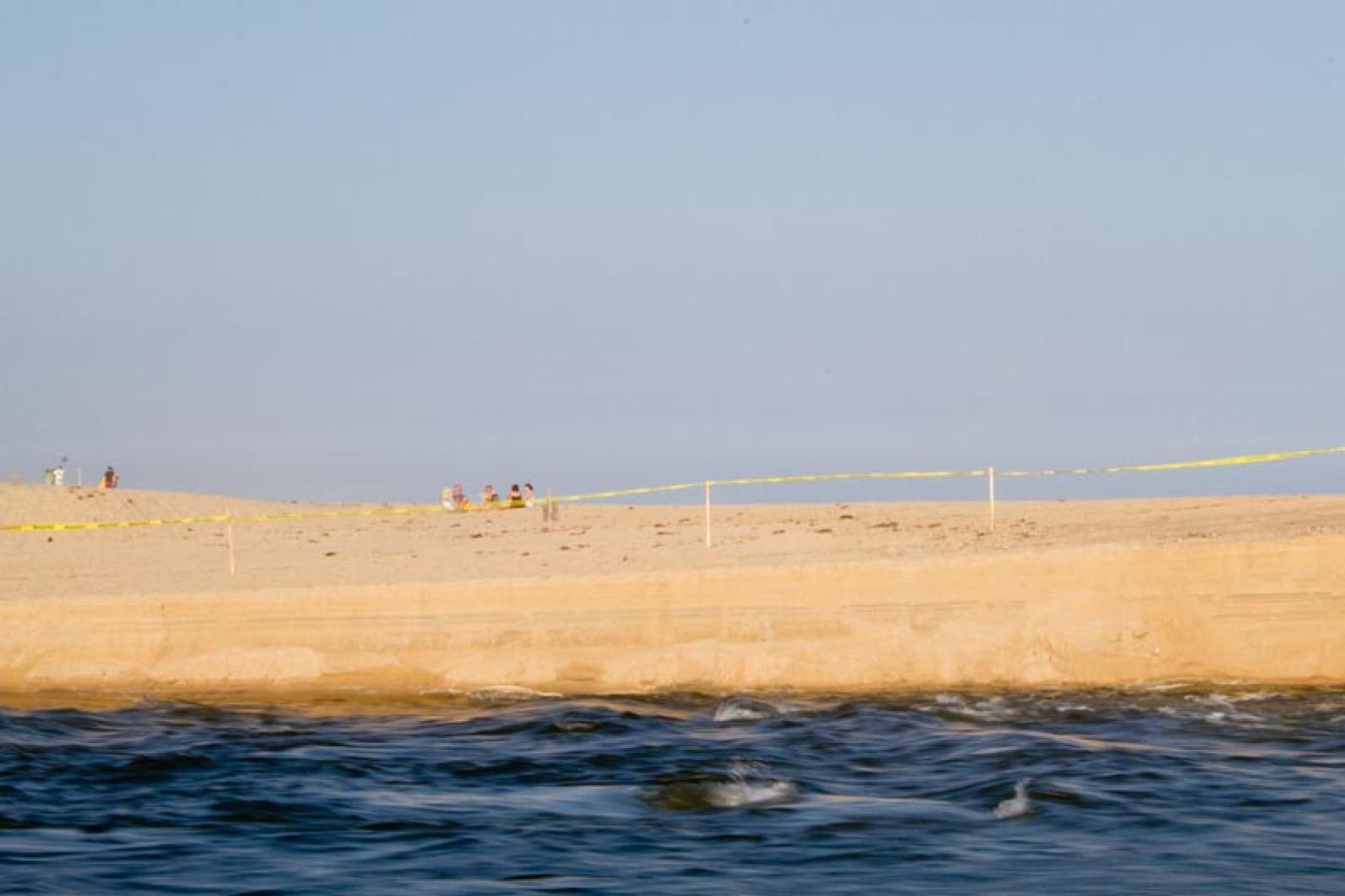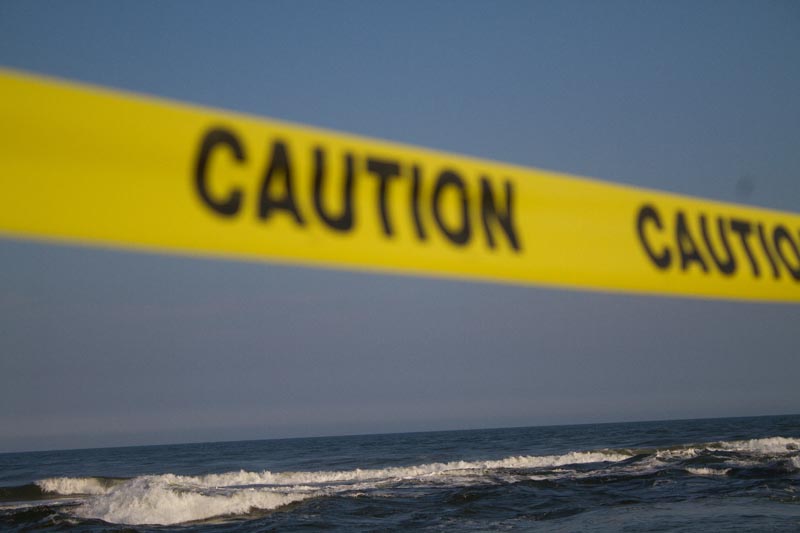The third try was the charm for the Edgartown Shellfish department. After two attempts earlier this month to open up Edgartown Great Pond to the Atlantic Ocean, shellfish constable Paul Bagnall and his crew finally succeeded Monday in creating a channel through the South Shore, allowing the freshwater and the saltwater to mingle, as it were.
“It worked, and we’re getting a good tide coming back into the pond,” Mr. Bagnall said Friday morning. Previous attempts failed, he said, because steady southwest winds caused the outer beach to build up more than usual.
In 1906, the Massachusetts state legislature approved a law permitting regular channel-cutting of the barrier beaches that form the outer limit of Great Ponds, “in order to properly drain the lowlands,” said civil engineer Kent Healy, who has cut the Tisbury Great Pond for the past two decades.
Since then, Tisbury and Edgartown Great Ponds, as well as Chilmark, Oyster Watcha and Oyster Ponds each have been cut four times per year to maintain their health.

“Both [Edgartown and Tisbury Great Ponds] have issues with excess nitrogen,” Martha’s Vineyard Shellfish Group director Rick Karney said. “The ocean water’s much cleaner from that standpoint . . . it’s also necessary to maintain the salinity.”
“In general, it’s just really good for the health of the pond,” Chilmark shellfish constable Isaiah Scheffer said. “We have it open as long as we can.”
Tisbury Great Pond was opened earlier this month; the cut through Quansoo Beach lies just west of a piping plover nesting area. On the day it was opened, rushing tides and the steep drop of the sand cliff caused by Mr. Healy’s excavator created a dangerous rip zone; two weeks later, the channel is far wider and the waterflow more mellow — enough for beachgoers to ride the tidal current.
But despite the secondary benefits to swimming sunbathers, the real purpose of making the channels is to maintain the biology and chemistry of the ponds. Last week, before Edgartown Great Pond had been successfully opened, salinity levels in the ocean were 32 parts per thousand, Mr. Bagnall said. In the pond, they were 10 parts per thousand. The interchange of salt and fresh water equalizes the salinity, making the ponds more conducive to shellfish growth.
“A more salty environment is a more diverse environment,” Mr. Bagnall said. “And generally a more healthy one.”
“It’s really important for my [shellfish] projects that the pond does get a good flush and the water quality does improve,” Mr. Scheffer said.
Oysters are raised in Tisbury and Edgartown Great Ponds, as are other mollusks, such as steamer clams. Herring also enter the ponds in the spring to spawn and feed in the coves. Juvenile herring then grow up in the relative safety of the waters before heading to sea again when a new cut is made.
Mr. Healy has been charting water levels in Tisbury Great Pond for the past 20 years; he times the cut around the new and full moons, when tidal levels are at their extremes. Excavating begins at high tide, creating a pull of water out of the pond as the ocean recedes. The process was once completed by hand, Mr. Healy recalled. “People would bring shovels and start digging.”
“It’s the most interesting thing I do at work,” Mr. Bagnall said. “And the most frustrating at times.”






Comments
Comment policy »